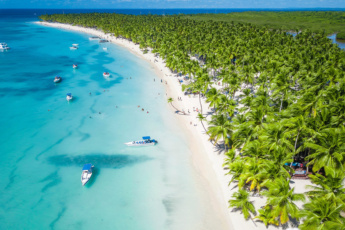Safety Concerns: Reliable Ways to Ensure a Secure Vacation Experience
Understanding Common Safety Concerns While Traveling

Safety Concerns: Reliable Ways to Ensure a Secure Vacation Experience
Traveling can be one of life’s most exhilarating experiences, but it’s not without its challenges. Understanding the common safety concerns that travelers face is essential for ensuring a secure vacation experience. Arming yourself with knowledge can make all the difference between a stressful trip and one filled with unforgettable memories. Let’s dive into the core areas of concern that every traveler should be aware of.
1. Health Risks and Precautions
When you embark on a journey, it’s crucial to consider the potential health risks associated with your destination. Different regions have varying health concerns, from tropical diseases to food allergies.
Before you travel, it’s wise to consult with a healthcare provider about necessary vaccinations and preventative medications. Some common vaccinations include Hepatitis A, Typhoid, and Yellow Fever, depending on your travel itinerary.
In addition to vaccinations, you should also pack essential items like hand sanitizer, insect repellent, and any personal medications you may need. It’s also beneficial to research the local healthcare system in case of emergencies. Knowing the location of nearby hospitals or clinics can save valuable time if unforeseen health issues arise.
Another aspect many travelers overlook is food safety. Familiarize yourself with local dishes and avoid street food if you have a sensitive stomach. Additionally, if you have food allergies, always carry an allergen card that outlines your restrictions in the local language to communicate effectively.
2. Crime and Personal Safety
Traveling opens the door to new cultures, but it can also expose you to crime risks. Understanding the safety landscape of your destination is paramount. Certain cities may have higher crime rates, particularly in tourist-heavy areas.
Researching your destination’s crime statistics can help you identify areas to avoid and the types of crime that are prevalent. Websites like Numbeo provide crime index ratings for various cities around the world.
To enhance your personal safety, consider employing a few strategies. Always stay aware of your surroundings and trust your instincts. If something feels off, change your route or seek help. Additionally, make sure to secure your belongings with anti-theft bags or locks, and avoid displaying valuables like expensive jewelry or electronics.
In emergency situations, knowing the local emergency numbers and the location of your country’s embassy can also provide peace of mind.
3. Environmental Hazards
Many travelers may not consider environmental hazards when planning their trips, but being aware of natural disasters is critical. Depending on the region, you may face risks such as hurricanes, earthquakes, or floods.
It’s advisable to check weather patterns and understand the natural risks of your destination before you go. For instance, if you’re traveling to a hurricane-prone area during the season, have a plan in place for evacuation or shelter.
Additionally, familiarize yourself with any environmental health risks, such as air quality issues or endemic diseases carried by wildlife. Staying informed can help you enjoy your trip while minimizing any potential hazards.
In summary, understanding these common safety concerns while traveling can set the foundation for a secure and enjoyable vacation experience. By being proactive and prepared, you can navigate the complexities of travel with confidence and peace of mind.
Remember, knowledge is power. The more you know about your destination, the better equipped you’ll be to handle any challenges that come your way!
Planning Ahead: Essential Steps for a Safe Trip
Planning is the backbone of any successful trip, especially when it comes to safety. By taking proactive steps before you embark on your adventure, you can significantly reduce potential risks and prepare yourself for a secure and enjoyable experience.
1. Researching Your Destination
Before you set off to explore new horizons, it’s crucial to do your homework. Researching your destination can provide valuable insights that directly impact your safety. Here’s how to gather the necessary information:
- Local Safety Tips: Familiarize yourself with the area’s crime statistics, neighborhoods to avoid, and safety practices preferred by locals. Websites like government travel advisories and reputable travel blogs can be excellent resources.
- Emergency Contacts: Save local emergency numbers (like police, fire department, and hospitals) in your phone. It’s also wise to have contact information for your country’s embassy or consulate in the area.
- Cultural Norms: Understanding local customs and etiquette can prevent misunderstandings. For instance, in some cultures, certain gestures might be offensive, while in others, specific dress codes might be required.
2. Travel Insurance: Why It Matters
Travel insurance is often an overlooked yet essential aspect of planning a safe trip. Here’s why it matters:
- Protection Against Unforeseen Events: Travel insurance can cover a range of issues, from trip cancellations and lost luggage to medical emergencies. This financial safety net can save you from unexpected expenses.
- Choosing the Right Policy: When selecting travel insurance, look for policies that cover medical emergencies, evacuation, and repatriation. Consider add-ons for extreme sports or activities if you plan to engage in adventurous pursuits.
- Reading the Fine Print: Always read the policy details carefully to understand what is covered and what isn’t. Ensure that the limits are sufficient for your travel needs.
3. Packing for Safety
The way you pack can also play a crucial role in your safety during travel. Here are some essential items to consider including in your travel gear:
- First Aid Kit: A basic first aid kit is indispensable. Include band-aids, antiseptic wipes, pain relievers, and any personal medications you may need.
- Personal Safety Tools: Items like pepper spray, a whistle, or a personal alarm can help you feel secure and prepared for unexpected situations.
- Portable Phone Charger: Keeping your phone charged can be crucial for navigation and communication. A portable charger can save the day if you find yourself away from power sources.
Our Best Tours in Punta Cana

Saona Island Excursion - Caribbean Paradise
from $75 Read more
Swimming with Dolphins in Punta Cana - Top Adventure 2025 (50 minutes)
from $149 Read moreBy planning ahead, researching your destination, securing travel insurance, and packing wisely, you can significantly enhance your safety and overall travel experience. Remember, the more prepared you are, the less likely you are to encounter difficulties on your journey!
Staying Safe During Your Vacation
Ensuring your safety while enjoying your vacation is paramount. Here, we delve into practical strategies that will keep you secure and stress-free, allowing you to focus on creating unforgettable memories.
1. Being Aware of Your Surroundings
One of the simplest yet most effective ways to stay safe while traveling is to maintain a heightened sense of awareness about your surroundings. This practice involves being vigilant and observant of your environment, which can significantly reduce the risk of accidents or unwanted situations.
- Stay Alert: When walking in crowded areas or tourist hotspots, keep your belongings close and be mindful of pickpockets.
- Trust Your Instincts: If something feels off, don’t hesitate to leave the area or seek help. Your gut feelings are often your best defense.
- Know Your Exits: Familiarize yourself with the layout of any place you visit, such as hotels or public spaces, so you can quickly find an exit if necessary.
- Engage with Locals: Locals can provide invaluable insights about safe areas and potential risks, so don’t be shy about striking up a conversation.
2. Smart Use of Technology
In our digital age, leveraging technology can enhance your travel safety. Here are some essential tips to ensure your tech works for you:
- Download Safety Apps: Apps like TripIt for itinerary management and Emergency for local emergency contacts can be lifesavers.
- Utilize Offline Maps: Download maps of your destination to your phone before you go. This way, you won’t get lost or run into trouble if you lose service.
- Share Your Itinerary: Let friends or family know your travel plans, including where you will be staying and your daily itinerary. This way, someone always knows your whereabouts.
- Secure Your Devices: Use strong passwords and consider enabling two-factor authentication for added security on your devices.
3. Emergency Preparedness on the Go
Despite all precautions, emergencies can happen. Therefore, being prepared is crucial. Here’s how you can meet unexpected challenges head-on:
- Create an Emergency Plan: Identify the nearest hospitals, police stations, and embassies in your destination. Make a list and keep it handy.
- Keep Important Documents Safe: Use a travel wallet or a secure bag to keep your passport, identification, and other essential documents together.
- Know Your Insurance Details: Familiarize yourself with your travel insurance policy and keep a copy of your insurance card with you. This will streamline the process if you need medical assistance abroad.
- Stay Connected: Ensure your phone is charged and consider carrying a portable charger. Regularly check in with friends or family to let them know you’re safe.
By following these practical safety tips, you can navigate your vacation with confidence, ensuring that your focus remains on exploration and adventure.
Navigating Transportation Safely
Traveling can be one of life’s greatest adventures, but safety should always be a priority. Understanding the ins and outs of transportation safety ensures that your journey is not only enjoyable but also secure.
1. Choosing Safe Transportation Options
When it comes to transportation, the options available can vary tremendously depending on your destination. From renting a car to using rideshare services or hopping on public transit, understanding the safety records of these modes is crucial.
For instance, rideshare services like Uber and Lyft often have rigorous background checks for drivers and tracking features that can enhance safety. However, local taxis may differ in their regulations and safety protocols. Researching user reviews and safety ratings can provide insights into which services are reliable. Additionally, consider the following table for a quick comparison of transportation options:
Safety Comparison of Transportation Options
| Mode of Transport | Safety Rating | Cost-Effectiveness | Convenience |
|---|---|---|---|
| Rideshare Services | High | Moderate | High |
| Public Transit | Moderate | Low | Moderate |
| Rental Cars | High | High | High |
| Local Taxis | Variable | Moderate | High |
Each mode of transport comes with its own set of advantages and risks. Always opt for services that maintain a good safety record and ensure proper documentation, whether it’s your driver’s information or vehicle identification.
2. Avoiding Scams and Fraud
Traveling can expose you to various scams, especially in relation to transportation. One of the most common scams involves taxi drivers who manipulate fares by taking longer routes or charging exorbitant prices. To avoid falling victim to these tactics, always:
- Use reputable transportation companies.
- Research average fares before you travel.
- Ask your hotel for recommendations on trustworthy transportation options.
Another scam to be aware of is “fake rideshare drivers.” Always confirm the driver’s name and vehicle details through the app before getting in. If something feels off, trust your instincts and wait for another ride.
3. Staying Safe on Public Transit
Using public transportation can be a great way to explore new cities, but it also comes with its own set of challenges. Here are several best practices to ensure your safety:
- Stay alert: Keep your belongings close and be aware of your surroundings at all times.
- Travel during peak hours: Whenever possible, use public transport during busy times to reduce the likelihood of crime.
- Choose well-lit stations: If you are waiting for a bus or train, opt for well-lit areas and stay near other travelers.
Additionally, familiarize yourself with local transit maps and schedules to avoid confusion that could lead to unsafe situations. Using public transit apps can help you stay updated on routes and any delays or issues.
By following these tips, you can navigate transportation safely and enjoy every moment of your adventure with peace of mind!
Cultural Sensitivity and Local Laws
Traveling is not just about visiting new places; it’s about immersing yourself in different cultures and understanding the local customs. Cultural sensitivity is essential to ensure a smooth and safe vacation experience. By respecting local traditions and laws, you can avoid conflicts and misunderstandings that may jeopardize your trip.
1. Understanding Cultural Norms
Every destination has its unique cultural norms that shape the social fabric of the community. From dress codes to dining etiquette, being aware of these norms can help you navigate your surroundings more effectively. For instance, in many Middle Eastern countries, modest clothing is a sign of respect. In contrast, tropical destinations may encourage light, casual wear.
Additionally, gestures that are commonplace in one culture may be considered offensive in another. For example, pointing with your finger is seen as rude in some Asian cultures, while it’s perfectly acceptable in the West. Thus, understanding these subtleties can foster positive interactions and help you connect with locals.
2. Legal Considerations for Travelers
Each country has its own set of laws and regulations that can significantly differ from those in your home country. Familiarizing yourself with local laws is crucial to avoid unintentional offenses. For instance, possessing certain substances that are legal in one country can lead to severe penalties in another.
Some countries have strict regulations regarding photography, especially near military installations or government buildings. It’s important to respect these laws to avoid legal troubles. Additionally, public behavior, such as public displays of affection, may be frowned upon in conservative societies. Always check local laws before traveling to ensure your actions align with cultural expectations.
3. Language Barriers and Communication Tips
Language barriers can pose challenges, but effective communication can enhance your travel experience and safety. Start by learning a few basic phrases in the local language, such as greetings and polite requests. This effort often leads to warmer interactions and can even help you receive assistance more readily.
Consider using translation apps on your smartphone, which can bridge the gap in communication. Tools like Google Translate can help you navigate conversations with locals or read signs and menus. However, be mindful of your surroundings while using your phone in public, as it can attract unwanted attention.
In case of emergencies, know how to say “help” or “emergency” in the local language. It’s also wise to have the contact information for your country’s embassy or consulate handy, as they can provide assistance in legal matters or emergencies.
By embracing cultural sensitivity, understanding local laws, and improving your communication skills, you can ensure a more enjoyable and safe vacation experience. These considerations not only enrich your travels but also foster respect and goodwill between cultures, making the world a little smaller and friendlier.
Post-Travel Safety: What to Do When You Return
Returning from an adventure is always bittersweet. While the urge to dive back into everyday life is strong, it’s crucial to ensure that your safety continues even after your journey has ended. Here’s how to smoothly transition back and keep your health and home secure.
1. Monitoring Your Health After Travel
After a vacation, the excitement of new experiences can sometimes overshadow the importance of monitoring your health. Travel, especially to foreign countries, can expose you to various health risks, including foodborne illnesses, vector-borne diseases, and even respiratory infections. Here are some proactive steps to take:
– **Watch for Symptoms**: Pay attention to any unusual symptoms like fever, fatigue, or gastrointestinal issues. If you feel unwell, consult a healthcare professional and provide them with detailed information about your recent travels.
– **Follow-up Vaccinations**: Depending on your destination, certain vaccinations may be recommended, or boosters might be necessary post-travel. For example, if you visited areas with a high risk of Yellow Fever or Typhoid, check if your vaccinations are up to date.
– **Stay Hydrated and Rest**: Sometimes the travel experience can be exhausting. Ensure you’re getting enough rest and hydration to help your body recover from any stress or strain endured during your trip.
2. Protecting Your Home While You’re Away
Keeping your home safe while you are off exploring is essential. A vacant home can become a target for burglaries or vandalism, so consider these strategies to fortify your space:
– **Smart Home Technology**: Invest in smart home systems that include security cameras, motion detectors, and smart locks. You can monitor and control your home via your smartphone, providing peace of mind while you’re away.
– **Ask a Neighbor for Help**: Enlist the help of a trusted neighbor or friend to check on your home periodically. They can bring in mail and packages to make it look like someone is home.
– **Light Timers**: Use timers on your lights to create the illusion of occupancy. Set them to turn on and off at intervals that mimic your regular patterns.
3. Sharing Your Experience Safely
While it’s tempting to flood your social media with vacation pictures and stories, it’s important to be mindful about how and when you share your experiences. Here are some tips for safe sharing:
– **Wait Before Posting**: Consider waiting until you’re back home before posting sensitive information or location tags. This helps prevent any potential risks of your home being targeted while you’re still away.
– **Limit Personal Data**: When sharing your experiences, avoid disclosing your home address or detailed travel itineraries. Instead, focus on the highlights of your trip and general locations.
– **Privacy Settings**: Review your social media privacy settings to ensure only trusted friends and family can see your posts. This helps you control who has access to your information.
By taking these proactive measures, you can ensure that your return from vacation is just as safe and secure as your time away. Remember, safety doesn’t stop when the plane touches down; it’s a continuous journey!
